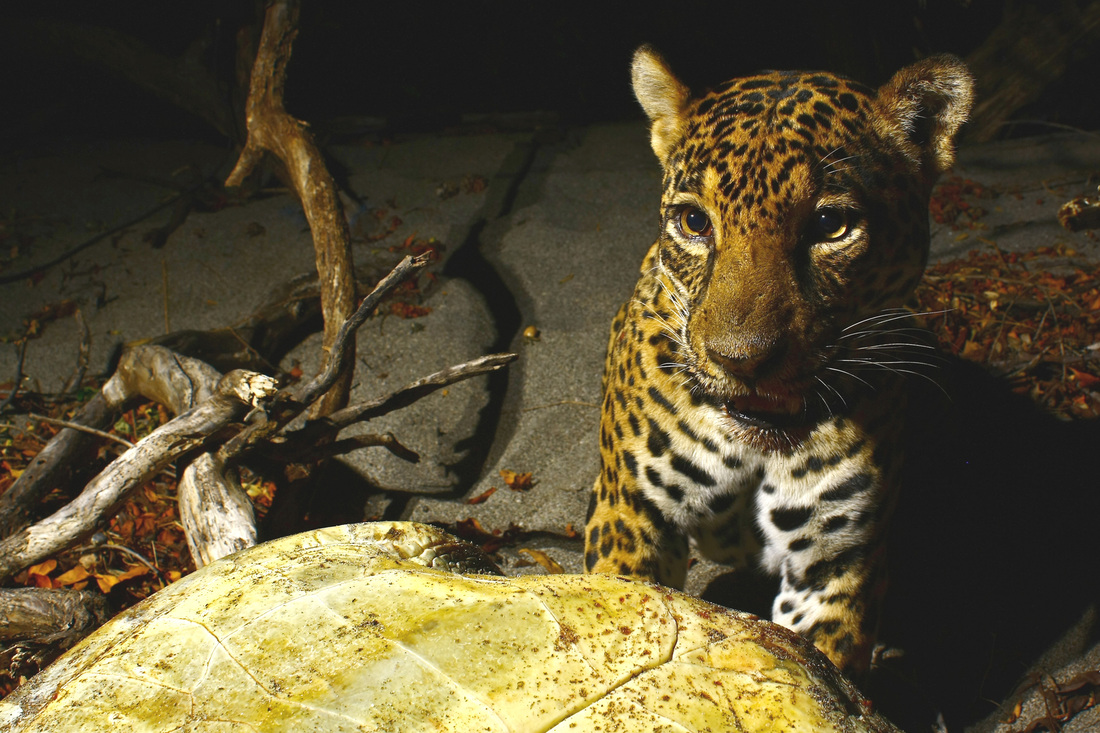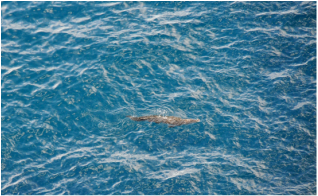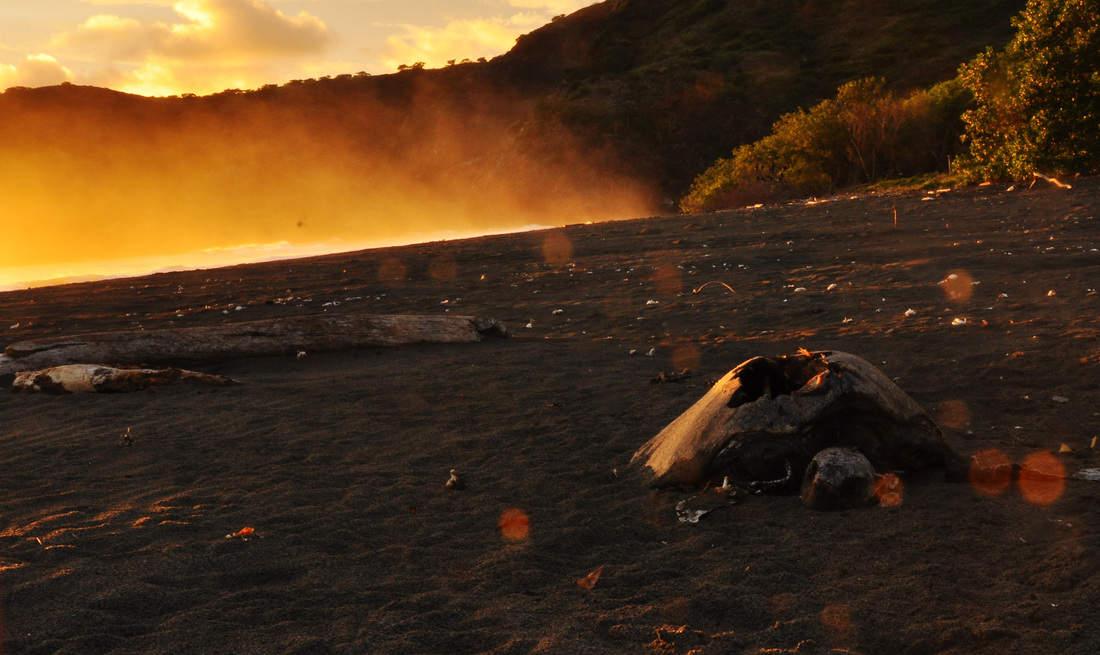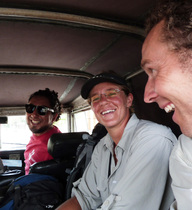We spent hours and hours walking a tropical beach in Santa Rosa National Park, Costa Rica…
in the dark…
without headlamps.
As the surf pounded the beach to my left, invisible and insistent, I tried to decide if I looked weak—or, really, if I looked like the weakest of our group.
This is a worry I often have, doing physically demanding work in remote locations, but in Costa Rica, it was not the opinion of the four other guys I was concerned about.
It was the opinion of the jaguars.
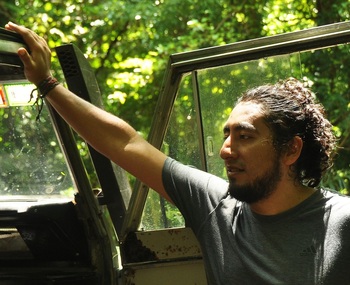 Cat biologist Juan Carlos Cruz Diaz (Photo by Nikki Mann)
Cat biologist Juan Carlos Cruz Diaz (Photo by Nikki Mann)
The big male jaguar had been there.
He probably still was, watching us from the thicket of mangrove trees only a dozen feet away. These massive, rare, and relatively polite cats were the reason cat-biologist Juan Carlos Cruz Diaz and friend, wildlife photographer Alonso Sánchez, were spending their vacation at a remote research station in Santa Rosa National Park, on the north Pacific coast near the Nicaraguan border.
We traveled to this place via rental car, bus, a 1975 Land Rover with no seat cushions, and our own two feet, backpacking the final two miles through a lightening storm. Although the beach itself is only a half-mile strip of sand sandwiched between charcoal cliffs, it is known as the best place in Costa Rica to see jaguars.
“The only jaguar I’ve seen, was like for just three seconds, right here,” Juan Carlos had said earlier that day when we arrived at the open-air research station. This statement, coming from a biologist who has studied jaguars in Costa Rica for the past six years, is telling.
Jaguar populations and behavior are not well understood. Secretive night hunters, they live in remote, densely forested places. Although Juan Carlos has camera traps set up literally all across the country, and has seen photographs and videos of various jaguars, he never gets to see the cat he works so hard to protect.
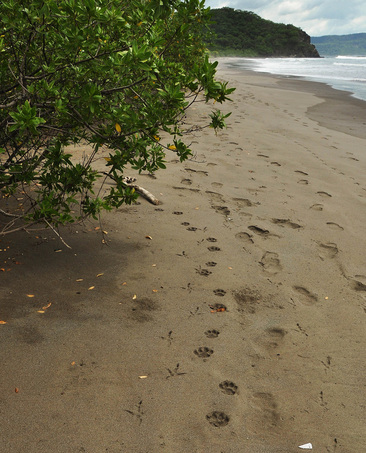 A large male jaguar left these tracks at 1 a.m., less than 15 minutes after we walked here. (Photo by Nikki Mann)
A large male jaguar left these tracks at 1 a.m., less than 15 minutes after we walked here. (Photo by Nikki Mann)
As though it will help me see in the dark, I wipe my glasses, fogged from the humidity of this “dry” forest, which received more rain this afternoon than my home state usually gets in an entire month.
I am reminded of another key prey species as the putrid smell of rotting flesh assaults my nose. The only resident researcher at this remote biological field station, a short, muscled Nicaraguan named Wilbert, clicks on his flashlight, briefly scanning the dense growth for the orange eye-shine we hope to see. The beam casts eerie shadows on the corpse of a hollowed-out Olive Ridley sea turtle shell and its punctured skull.
This particular skeleton is a leftover from arribada, another rarity in Costa Rica. Last Wednesday, five days before our arrival, 28,000 turtles came up on this beach to nest.
There are only two beaches in Costa Rica where arribada occurs, and the jaguars know it. Tonight, they hunt with only four or five turtles arriving, mainly the smooth-shelled Olive Ridleys, or possible one of the flashier Green turtles.
Even though I knew we were going try to see jaguars at night, nothing prepared me for the actuality of walking in almost total blackness, being watched by a 200-plus-pound killing machine with excellent night vision and no fresh turtle kills since last week.
Juan Carlos turned on his headlamp to follow the drag tracks of a crocodile’s spiny tail through the sand. “Probably three meters,” he said, guessing the size of the animal. “Going back and forth from the swamp.”
I did some mental math. Three-point-three feet to a meter times three meters was a nine-and-half-foot “log” with teeth that, walking in the dark without a headlamp, I could accidentally step on.
This is what adventure scientists do for vacation. And we love it.
Nikki Mann and her partner in adventure, Jeff Wohl, have been ASC guides for three years. When they aren’t working field biology or teaching natural history, they can be found planning their next epic trip.

